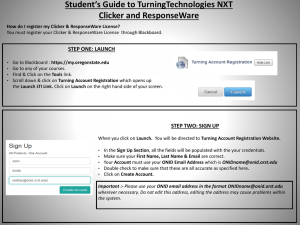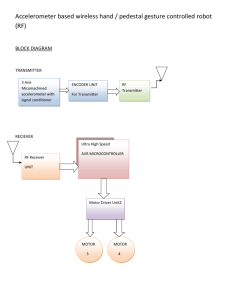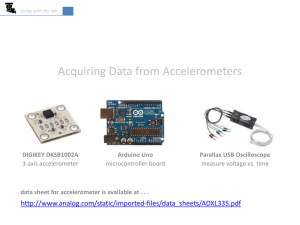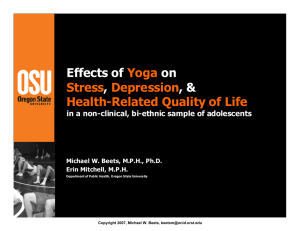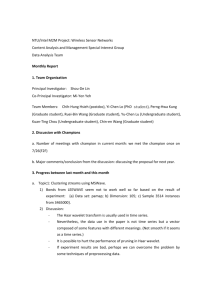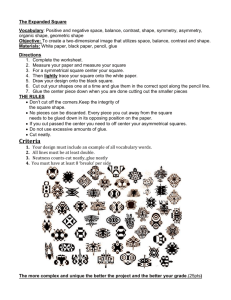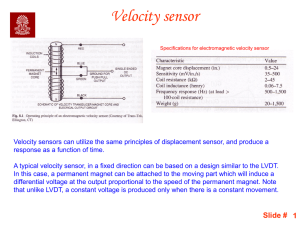Advice - Groups
advertisement
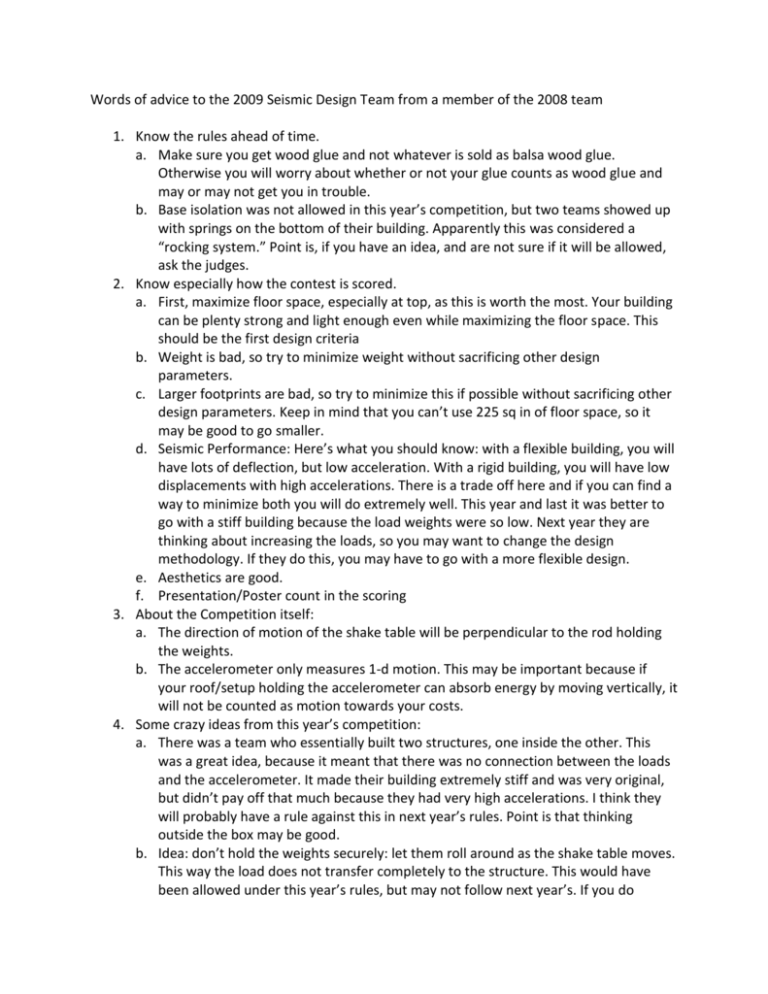
Words of advice to the 2009 Seismic Design Team from a member of the 2008 team 1. Know the rules ahead of time. a. Make sure you get wood glue and not whatever is sold as balsa wood glue. Otherwise you will worry about whether or not your glue counts as wood glue and may or may not get you in trouble. b. Base isolation was not allowed in this year’s competition, but two teams showed up with springs on the bottom of their building. Apparently this was considered a “rocking system.” Point is, if you have an idea, and are not sure if it will be allowed, ask the judges. 2. Know especially how the contest is scored. a. First, maximize floor space, especially at top, as this is worth the most. Your building can be plenty strong and light enough even while maximizing the floor space. This should be the first design criteria b. Weight is bad, so try to minimize weight without sacrificing other design parameters. c. Larger footprints are bad, so try to minimize this if possible without sacrificing other design parameters. Keep in mind that you can’t use 225 sq in of floor space, so it may be good to go smaller. d. Seismic Performance: Here’s what you should know: with a flexible building, you will have lots of deflection, but low acceleration. With a rigid building, you will have low displacements with high accelerations. There is a trade off here and if you can find a way to minimize both you will do extremely well. This year and last it was better to go with a stiff building because the load weights were so low. Next year they are thinking about increasing the loads, so you may want to change the design methodology. If they do this, you may have to go with a more flexible design. e. Aesthetics are good. f. Presentation/Poster count in the scoring 3. About the Competition itself: a. The direction of motion of the shake table will be perpendicular to the rod holding the weights. b. The accelerometer only measures 1-d motion. This may be important because if your roof/setup holding the accelerometer can absorb energy by moving vertically, it will not be counted as motion towards your costs. 4. Some crazy ideas from this year’s competition: a. There was a team who essentially built two structures, one inside the other. This was a great idea, because it meant that there was no connection between the loads and the accelerometer. It made their building extremely stiff and was very original, but didn’t pay off that much because they had very high accelerations. I think they will probably have a rule against this in next year’s rules. Point is that thinking outside the box may be good. b. Idea: don’t hold the weights securely: let them roll around as the shake table moves. This way the load does not transfer completely to the structure. This would have been allowed under this year’s rules, but may not follow next year’s. If you do connect the weights securely (probably the way to go), then make sure the nuts are secure/tight, and that the load points on the structure are reinforced. c. Crazy idea: Damping devices are allowed. In fact, this year, teams were allowed to connect their structure to the plywood with dampers alone. This did not work very well because the building swayed a lot which led to high displacements. My best idea for next year is this: An extremely stiff building that has just dampers holding the roof (or the board that attaches to the accelerometer) in place. Here’s why: a rigid building will have small displacements which is great. The trade off is high accelerations, which would be hugely damped by having the top floor on springs. The springs would take the high accelerations out of the accelerometer’s readings, but would not lead to high displacements. As an additional bonus, most of the motion may be turned into vertical motion, as opposed to horizontal, which is what the accelerometer reads. This may be a brilliant idea or not, but if I were doing this again, this is the design I would support. 5. Other random things: a. Simple, uniform designs are probably a good idea. b. No reentrant corners c. Use a square or hexagon or octagon shape for the base…something simple d. Do not do anything that will encourage torsion (a twisting tower design) e. Tapering may or may not help. Think about it f. Triangles are strong, so use lots of diagonal members crossing the floor beams for a strong building. Use squares for a more flexible or weaker building. g. You may not need a single column h. Maximizing the floor plan increases the moment of inertia of the cross section and allows for stronger walls, so do this for a stiffer building i. Add special reinforcement at the load points j. SAP2000 analysis is good, but it will not be extremely accurate if not done very carefully. k. Be original with your design 6. In my opinion, luck plays a role in this competition, so don’t feel that bad if things don’t go how you expect them to. Also, balsa wood is a very variable material, so expect that it will not perform as expected. Questions: Contact: Duncan Stark: Nick Peek: Matt Gordanier Joe Henry Bryan Costa starkdu@onid.orst.edu peeka@onid.orst.edu gordanim@onid.orst.edu henryjos@onid.orst.edu costab@onid.orst.edu
